Franz von Stuck (1863 – 1928)
Get a Stuck Certificate of Authenticity for your painting or a COA for your Stuckdrawing, print or sculpture.
For all your Stuckartworks you need a Certificate of Authenticity in order to sell, to insure or to donate for a tax deduction.
How to get a Stuck Certificate of Authenticity is easy. Just send us photos and dimensions and tell us what you know about the origin or history of your Stuckpainting, drawing, print or sculpture.
If you want to sell your Stuckpainting, drawing, print or sculpture use our selling services. We offer Stuck selling help, selling advice, private treaty sales and full brokerage.
We have been authenticating Stuckand issuing certificates of authenticity since 2002. We are recognized Stuckexperts and Stuck certified appraisers. We issue COAs and appraisals for all Stuck artworks.
Our Stuckpaintings, drawings, prints and sculptures authentications are accepted and respected worldwide.
Each COA is backed by in-depth research and analysis authentication reports.
The Stuckcertificates of authenticity we issue are based on solid, reliable and fully referenced art investigations, authentication research, analytical work and forensic studies.
We are available to examine your Stuckpainting, drawing, print or sculpture anywhere in the world.
You will generally receive your certificates of authenticity and authentication report within two weeks. Some complicated cases with difficult to research Stuckpaintings, drawings or sculptures take longer.
Our clients include Stuckcollectors, investors, tax authorities, insurance adjusters, appraisers, valuers, auctioneers, Federal agencies and many law firms.
We perform Franz Stuck art authentication, appraisal, certificates of authenticity (COA), analysis, research, scientific tests, full art authentications. We will help you sell your Franz Stuck or we will sell it for you.
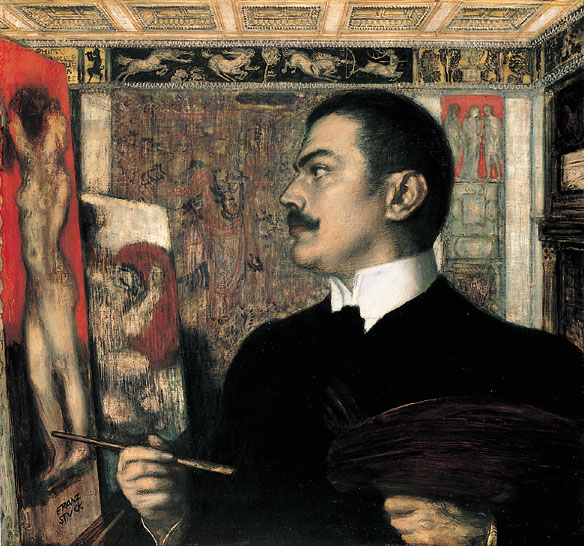
Franz Stuck was a German Symbolist/Art Nouveau painter, sculptor, engraver, and architect. He is considered by some to be one of the artistic inspirations to German Fascism. Stuck was born at Tettenweis, in Bavaria. From an early age he displayed an affinity for drawing and caricature. To begin his artistic education in 1878 he went to Munich, where he would settle for life. From 1881 to 1885 Stuck attended the Munich Academy.
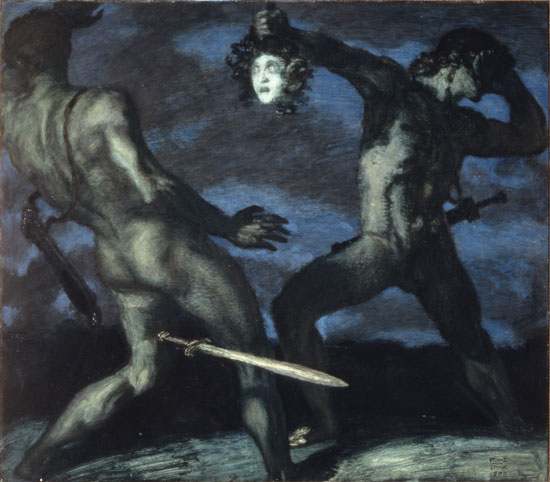
He first made a name with cartoons for Fliegende Blätter, and vignette designs for programmes and book decoration. In 1889 he exhibited his first paintings at the Munich Glass Palace, winning a gold medal for The Guardian of Paradise.
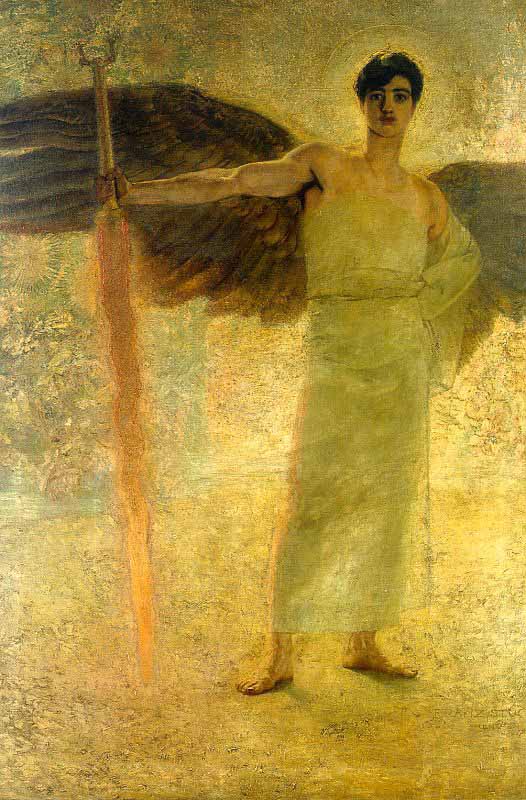
In 1892 Stuck co-founded the Munich Secession, and also executed his first sculpture, Athlete. The following year he won further acclaim with the critical and public success of what is now his most famous work, The Sin. Also in 1893, Stuck was awarded a gold medal for painting at the Chicago World’s Fair and was appointed to a royal professorship. In 1895 he began teaching painting at the Munich Academy.

In 1897 Stuck married an American widow, Mary Lindpainter, and began work designing his own residence and studio, the Villa Stuck. His designs for the villa included everything from layout to interior decorations; for his furniture Stuck received another gold medal at the 1900 Paris World Exposition.
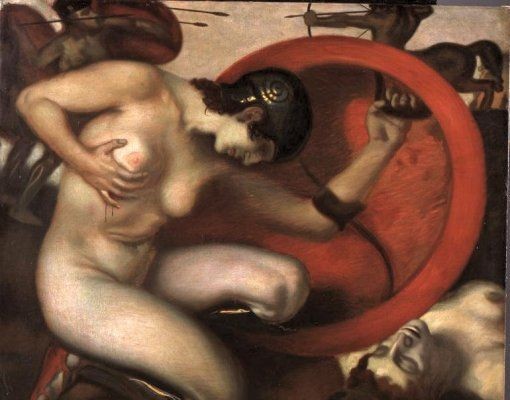
Having attained a high degree of fame by this time, Stuck was elevated to the aristocracy on December 9, 1905 and would receive further public honors from around Europe during the remainder of his life. Even as new trends in art left Stuck behind, he continued to be highly respected among young artists in his capacity as professor at the Munich Academy. Notable students of his over the years include Paul Klee, Hans Purrmann, Wassily Kandinsky, and Josef Albers. Franz Stuck died in 1928; his funeral address memorialized him as “the last prince of art of Munich’s great days”. He is buried in the Munich Waldfriedhof next to his wife Mary.

Stuck’s subject matter was primarily drawn from mythology, inspired by the work of Arnold Böcklin. Large, heavy forms dominate most of his paintings and point toward his proclivities for sculpture. His seductive female nudes, in the role of the femme fatale, are a prime example of popular Symbolist content. Stuck paid close attention to the frames for his paintings and generally designed them himself with such careful use of panels, gilt carving and inscriptions that the frames must be taken as an integral part of the overall piece.
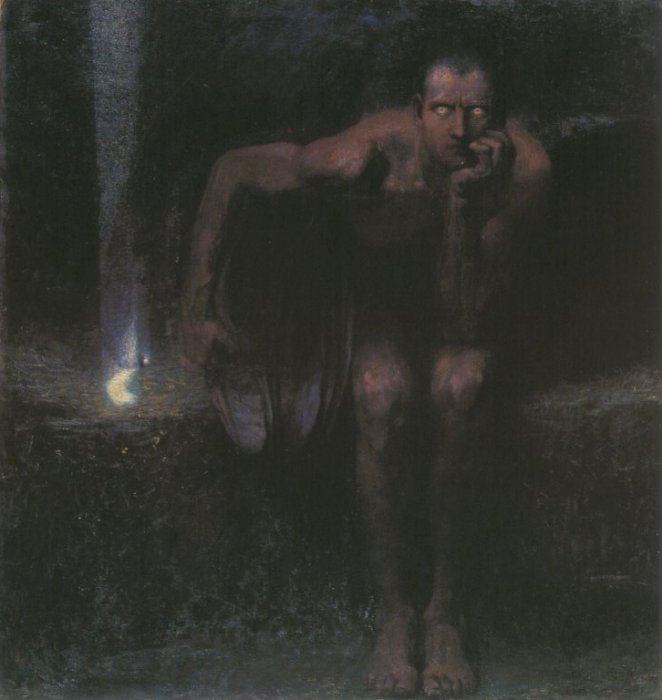
The number of Stuck’s pupils who went on to great success served to enhance the teacher’s own fame even further. Yet by the time of his death, Stuck’s importance as an artist in his own right had almost been forgotten: his art seemed old-fashioned and irrelevant to a generation shattered by the First World War. Adolf Hitler was among those who still admired the painters of nineteenth century Munich, and when the Nazis came to power Stuck was among the artists of the past cited as an example of proper Germanic values. But Stuck generally remained lost to public memory until the late 1960s when a renewed interest in Art Nouveau brought him to attention once more. In 1968 the Villa Stuck was opened to the public; today it is a museum.
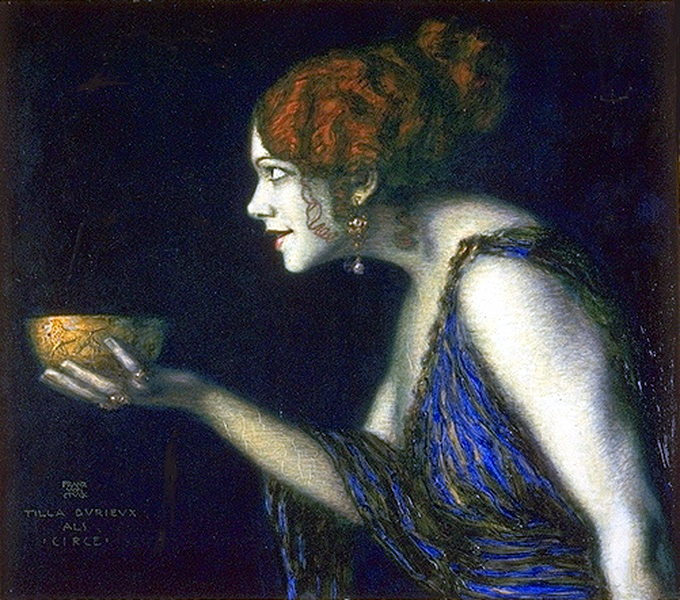
Still wondering about a German painting in your family collection? Contact us…it could be by Franz Stuck.
Reviews
1,217 global ratings
5 Star
4 Star
3 Star
2 Star
1 Star
Your evaluation is very important to us. Thank you.
